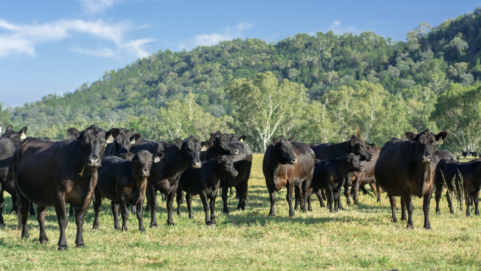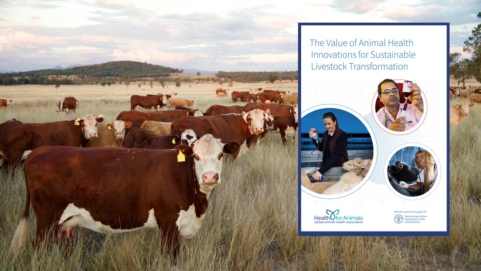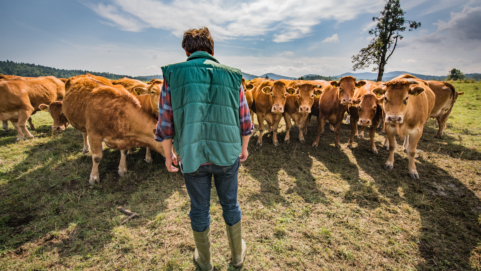Improved animal health provides key opportunity for reaching shared climate goals set out in new plan – but more funding needed
Animal Medicines Australia (AMA) acknowledges the 2035 climate target and Agriculture and Land Sector Plan (the Plan), announced on 18 September by the Prime Minister, Treasurer and Minister for Climate Change and Energy. The animal health sector has a valuable role to play in helping Australia meet its climate targets. Animal health is a critical, yet often overlooked, part of the solution. Improving animal health offers a cost-effective and sustainable opportunity for livestock industries to reduce emissions and manage climate risks.
- Media Releases
- 23 September 2025

Canberra, ACT – Animal Medicines Australia (AMA) acknowledges the 2035 climate target and Agriculture and Land Sector Plan (the Plan), announced on 18 September by the Prime Minister, Treasurer and Minister for Climate Change and Energy.
The animal health sector has a valuable role to play in helping Australia meet its climate targets. Animal health is a critical, yet often overlooked, part of the solution. Improving animal health offers a cost-effective and sustainable opportunity for livestock industries to reduce emissions and manage climate risks.
AMA is pleased that the Plan recognises that adoption of technologies and practices including feed additives, genetics and vaccines, are projected to contribute “sizeable reductions” in emissions from livestock.
The World Organisation for Animal Health (WOAH) estimates that over 20% of animal production worldwide is lost as a direct result of disease¹ – livestock health is critical for food safety, farm productivity, and climate resilience. Healthy livestock grow more efficiently, require fewer resources, and produce less emissions². Improving animal health through disease prevention, early detection and treatment of illness is central to achieving environmental goals.
Investments in animal health should be one of the key action points to reduce GHG emissions from livestock. Of all climate-related investment within the agriculture and land use sector, livestock, with only 2 percent of climate finance received, is one of the least financed sub-sectors³.
AMA agrees that agricultural decarbonisation must be achieved with the sector, not imposed on the sector, and that we can only achieve our shared climate goals through partnership and collaboration.
Global animal health organisation, HealthforAnimals, have developed the report, Healthy Herds for Sustainable Production in partnership with the Global Roundtable for Sustainable Beef, which outlines five shared principles and real-world case studies showing how cattle health supports lower emissions and land use, improved livelihoods and food security, and a more resilient, sustainable beef value chain.
Incorporating animal health, specifically animal vaccination into Australia’s Nationally Determined Contributions (NDCs) will help make a sizeable contribution to reaching these goals. The policy guide, How to Advance NDCs and Climate Strategies through Animal Health, outlines how proven animal health strategies can be incorporated into Nationally Determined Contributions and national climate activities.
To integrate animal health into national climate strategies and NDCs, Australia must first build a strong foundation of evidence and context. This begins with assessing the role and significance of the livestock sector within the economy, its contributions to greenhouse gas emissions, and the specific animal health challenges that influence those emissions. These assessments should be grounded in data specific to Australia, as both emissions and disease impacts vary significantly by region, production system and species.
In parallel, the government must evaluate the existing landscape of veterinary services, policies, and institutional capabilities, identifying strengths, gaps and priority disease threats, especially those likely to intensify with climate change. This landscape analysis is critical for identifying strategic entry points and tailoring interventions to national needs. With these insights in hand, Australia can develop a targeted animal health strategy aligned with our national climate goals. This strategy should prioritise emissions reductions, climate adaptation, and economic development by defining clear policy pathways and practical interventions. Done effectively, it positions animal health not as a peripheral concern, but as a core pillar of a resilient, climate-smart agricultural future.
Vaccination programmes not only protect animal populations but also safeguard public and environmental health. Decreasing the burden of animal diseases contributes to mitigate the risk of zoonoses, reduce the need to use antimicrobials, preserve biodiversity and reduce environmental impact from livestock, and positively contributes to the achievement of several Sustainable Development Goals.
As a signatory to the United Nations Political Declaration on Antimicrobial Resistance, Australia has a duty to ensure, by 2030, that animal vaccination strategies are defined with an implementation plan, including with international cooperation, taking into account the World Organisation for Animal Health list of priority diseases.
Australia already has the building blocks in place to support these initiatives, through national disease control programs, sector-specific sustainability frameworks and coordinated veterinary services.
These resources outline how to adapt and align them with climate goals, helping to turn existing programs into measurable emissions reduction strategies.
ENDS


